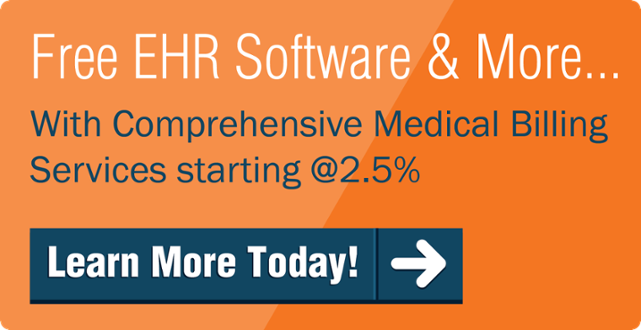It’s a fact: Without an effective—and efficient—revenue cycle, physician practices cannot weather the storm of ongoing reimbursement changes in today’s healthcare environment. ICD-10, for example, has forced practices to take a closer look at their overall revenue cycle efficiencies as well as specific documentation and coding practices. Other regulatory changes, such as the Merit-Based Incentive Payment System (MIPS) and Alternative Payment Models (APM), continue to drive process improvement. A solid revenue cycle is the one constant amidst ongoing—and oftentimes unpredictable—change.
of ongoing reimbursement changes in today’s healthcare environment. ICD-10, for example, has forced practices to take a closer look at their overall revenue cycle efficiencies as well as specific documentation and coding practices. Other regulatory changes, such as the Merit-Based Incentive Payment System (MIPS) and Alternative Payment Models (APM), continue to drive process improvement. A solid revenue cycle is the one constant amidst ongoing—and oftentimes unpredictable—change.
To ensure financial survival, practices must examine their revenue cycle regularly, looking for gaps and vulnerabilities and then taking steps to improve processes. This article provides seven tips practices can use to improve their revenue cycles in 2016 and beyond.
1. Pre-register your patients.
Ask front-office staff members to collect demographic and insurance information from patients when the appointment is made over the phone—not when patients present for the visit. Doing so allows practices to verify eligibility and let patients know in advance of any copayments or co-insurance amounts that will be due upon arrival. It also reduces the volume of claims denied due to non-coverage. In addition, certain technologies can assist with real-time coverage determinations and patient estimations that can cut down on some of the front-end work that’s required.During each subsequent visit, be sure to confirm demographic and insurance information to validate whether it’s still accurate. Don’t make the mistake of simply asking patients, “Has your information changed?” Most patients will say “everything is the same” even when they’ve received a new insurance card or moved to a new address.
2. Post charges as soon as possible.
To ensure timely reimbursement, post charges the same day services are rendered. Some practice management systems offer a missing charge report function that cross-references the appointment schedule against charge slips to ensure that all charges have been included. If possible, use this function to decrease manual checks and keep the revenue cycle flowing smoothly.3. Use EMR templates.
Templates not only enhance physician productivity (thereby enhancing the revenue cycle process), but they also ensure that certain elements are present in the medical record documentation. For example, a payer may require specific documentation for a procedure (e.g., wound debridement). An effective template prompts physicians to document these details to avoid retrospective audits and recoupments. Templates also reduce coder queries because they help capture details up-front. These small efficiencies help to drive overall efficiency within the revenue cycle.4. Hire a certified medical coder and invest in continuing education.
Certified coders possess a thorough understanding of ICD-10-CM, CPT, and evaluation and management coding and can assign codes directly or simply validate and audit codes that physicians choose using the EHR, thereby mitigating financial risk. Certified coders not only validate code accuracy and specificity, but they can also assist with clinical documentation improvement, compliance training, and process improvement. Each of these initiatives can improve and enhance your overall revenue cycle.5. Work rejections and denials immediately.
First, determine whether errors are due to:- Mistakes in data entry
- Incomplete or inaccurate insurance information
- Lack of pre-certification or prior authorization
- Not capturing all tests or procedures
- Diagnosis or procedure coding errors or omissions
- Past timely filing limits
- Lack of medical necessity
Inform staff members of these errors, and take immediate steps to implement corrective actions.
Track and trend these denials over time according to payer, type of denial, and provider. When working denials, encourage staff members to develop a first-name relationship with provider representatives at high-volume payers to resolve issues more efficiently. It may also be helpful and more efficient to outsource your denial management.
6. Establish an automatic small balance write-off amount.
This saves time in cleaning up small balances, allowing staff members to focus on more lucrative accounts.
7. Focus on self-pay patients.
This includes patients without any insurance coverage as well as those with high-deductible insurance plans. Consider these five strategies:- Invest in one or more staff members who can educate patients about each element of the medical/bill statement and what it means. Patients are more likely to pay the bill when they understand its various components.
- Offer a payment plan so patients can pay over time rather than one large lump sum.
- Consider offering a discount for those who are uninsured or underinsured.
- Offer online bill payment options.
- Develop a policy regarding your internal collection period and when accounts will be written off and/or turned over to an external collections agency.
Looking Ahead
Your practice’s revenue cycle can make or break your financial success. Practices must continually monitor and strive to improve their revenue cycles. A health revenue cycle = a healthy practice.







